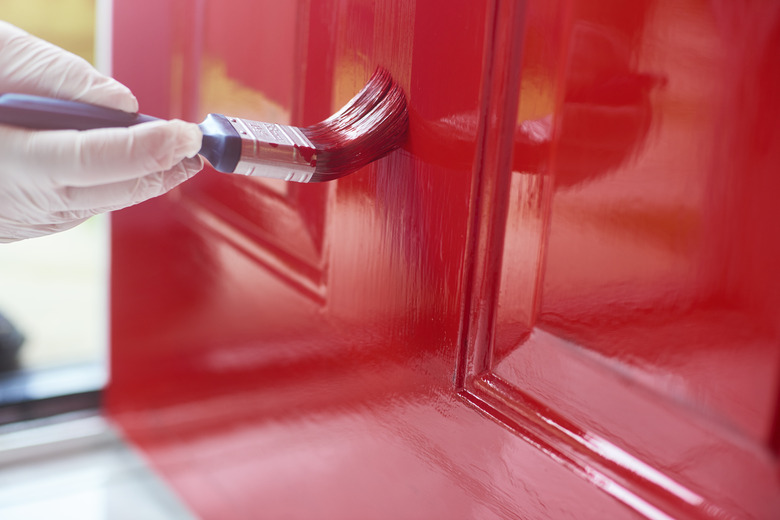How To Stop Odors From Oil-Based Paint
We may receive a commission on purchases made from links.
Latex paint is a popular choice for painting various surfaces, but oil-based paint has some distinct advantages for certain projects. Despite the benefits, the odor that comes along with using oil-based paint can be a pain to live with. You can help air out the odors faster to make your freshly painted home a more pleasant place to be.
Using Oil-Based Paint
Using Oil-Based Paint
Oil-based paint, also called alkyd paint, works well on surfaces that are difficult to paint because it adheres well to a variety of surfaces. It also flows and levels well, resulting in a smoother finish with fewer brushstrokes. After oil-based paint cures, it's very durable and resists moisture, abrasions, and other damage. These characteristics make it good for painting doors, cabinets, and other surfaces that get touched frequently.
However, all those benefits come with a much stronger, longer-lasting smell than latex paint due to higher volatile organic compounds, or VOCs. When using oil-based paint, it can take up to two months to be rid of the smell when it finally fully cures. The fumes can cause irritation, including reactions such as headache, nausea, dizziness, and breathing issues. Incorporating a variety of methods to dissipate the scent faster can reduce those side effects.
Ensure Adequate Ventilation
Ensure Adequate Ventilation
Lots of ventilation during and after the painting project is essential for getting rid of the oil-based paint odors. This helps eliminate the VOCs quicker by giving them an escape route, and it can help the paint cure faster, which gets rid of the odor. Choose the timing of your painting job based on the weather to allow the windows to stay open throughout the painting process. Open the windows as much as possible after you're finished painting until the room no longer smells.
Fans can also help clear out the smells quicker. Wait until the paint is dry to the touch before turning on the fans to avoid blowing dust or debris into the wet paint. Once it's dry, place fans for ventilation in the windows pointing outside to pull the air out of the room. You can also use a pedestal fan on the floor near the window to pull the odors out of the room.
Absorb Odors With Baking Soda
Absorb Odors With Baking Soda
Known for its effectiveness in absorbing fridge odors, baking soda also absorbs other odors throughout your home, including the strong oil paint smell. You can place bowls of baking soda throughout the room to soak up the odor. Throw out the baking soda regularly and put fresh baking soda in the bowls to keep absorbing the smells.
Another strategy is to sprinkle the baking soda on soft surfaces in the room, such as the carpeting and upholstered furniture. Wait at least a few hours and then vacuum up the baking soda remnants to help suck up some of the odors in those soft materials.
Use Other Odor-Absorbing Materials
Use Other Odor-Absorbing Materials
Several other household items can also help absorb the oil-based paint odors to improve the smell of your room. Some odor-absorbing options include:
- Activated charcoal: You can use activated charcoal in bowls around the room similar to baking soda. However, don't sprinkle it on soft materials, as it can cause stains.
- Coffee grounds: If you like the smell of coffee, putting out bowls of coffee grounds might be your preferred way to absorb the paint odors.
- Lemon and salt water: Another good-smelling method you might try is lemon and salt water. The salt helps to absorb the odors, while the lemons add a citrusy scent to the space. Add about 2 tablespoons of salt to a large tub of water and toss in a few lemons cut into slices. Place it in the room. Refresh the salt water and lemons regularly.
Incorporating a variety of methods and odor absorbers can help improve your room's smell even quicker.
